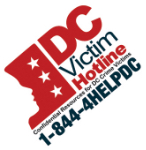What is the difference between a Restraining Order and a Protection order?
Though its name can vary state-to-state, in Washington DC, a Civil Protection Order (sometimes referred to in other states as a Protection Order, Stay Away Order, or a Protection from Abuse Order) requires your abuser to do or refrain from doing certain actions. Civil protection orders are part of the civil justice process and a victim is referred to as the Petitioner while the abuser is referred to as the Respondent. Most commonly, civil protection orders require the abuser to stay away from the Petitioner, his/her home, work or other places regularly visited, and not contact the Petitioner. In DC, Petitioners may also be able to request additional reliefs such as child support, temporary custody of children in common, reimbursement for damages, or relinquishment of firearms. It is important to remember that DC allows Petitioners to customize their requests based on their needs and individual situations. In DC, the main difference between restraining orders and protection orders is the relationship between the two parties. Civil protection orders require that an “intrafamily relationship” exists (e.g. spouse, romantic or sexual relationships, blood relatives, roommates, or having a partner in common) rather than the parties being strangers or neighbors. If there is no qualifying intrafamily relationship between the parties, victims usually would file for a Restraining Order.
How do I file for a Civil Protection Order?
Victims can file for a civil protection order on their own, but it may be helpful to seek help from a victim advocate and/or legal expert. Victim advocates work through local domestic violence or crisis centers in order to help victims find out if they are eligible to file a protection order, assist with filling out the paperwork, refer to free or low cost attorneys, and serve as a guide through the process.
To file in DC:
Go to the DC Superior Courthouse’s Domestic Violence Intake Center at either of the following locations:
- 500 Indiana Ave NW suite 4550 Washington, DC 20001
- 1328 Southern Ave SE suite 311 Washington DC 20032 (Please note: This location is ONLY for those with an intrafamily relationship to their Respondent – Petitioners with other relationships to Respondents or are unsure if they meet the requirements for a civil protection order should go to the courthouse in NW)
OR
If you have experienced violence from an intimate partner, please contact DC SAFE’s response line at 1-800-407-5048.
Tips for Enforcing a Protective Order:
- Keep a copy of your protective order with you at all times.
- Keep the original copy of your protective order somewhere safe.
- Make sure to review and fully understand your protective order.
- If you have children, make a copy for your child’s school.
- If you would like any changes to your protective order, visit the clerk at your local court.
- Read “Enforcement of Protective Orders” by the U.S. Department of Justice for a better understanding on how to enforce your protective order.
What if I am ready to leave my abuser or I am worried about my safety after filing for my order?
For more information, please visit our Safety Planning page.
